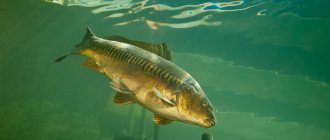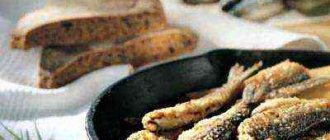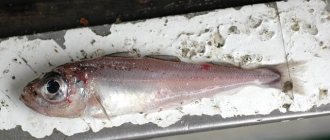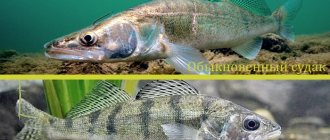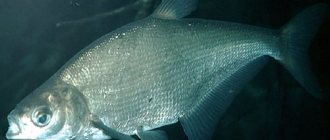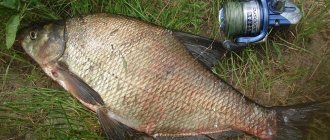Description
Vendace (or ripus, or kilets) belongs to a species of freshwater fish of the whitefish family.
Due to its nutritional properties, in the 15th - 17th centuries it was considered royal food and was included in the daily menu of crowned heads (it was called royal herring). There are 4 subspecies:
- European,
- Siberian,
- Belomorskaya,
- Pereslavskaya
The body of this fish is strongly compressed on both sides, so it is often confused with herring. In individuals living in seas and lakes, numerous modifications are observed in external characteristics: size, body color, number of scales.
For example, if we take two different lakes, each of them will be dominated by its own individual, it will be almost impossible to find the same vendace.
This is not a very large fish: the lake form (ripus) reaches up to 45 cm and weighs up to 1 kg - this is the Siberian vendace. On average, the length is 10 - 12 cm, and the maximum weight is 75-100 g. The life cycle lasts about 7 years.
What kind of fish is vendace?
Of the entire large salmon family, which includes whitefishes, the ray-finned fish vendace is most similar to herring. Therefore, in some places it is mistakenly called herring (for example, large specimens are found in Lake Pleshcheyevo and have the popular name “Pereslavl herring”). The official names recorded in encyclopedias are vendace, kilets, ripus, and the Latin name is Coregonus albula. There is also a North American species, Coregonus artedii, and an Arctic species, Coregonus autumnalis.
Appearance
The neat body of the ripus is covered with shiny scales. Ripus are mobile and gather in large schools, so it is easy to determine the path of movement by the characteristic shine of the silver flock. Fishing boats are advised of “fishy” spots by seagulls that flock to the bays when a school of ripus appears at the surface of the water.
Although the average size of each fish does not exceed 20 cm and 80-100 g, in some reservoirs it is possible to catch relatively large specimens. It is believed that growth rate is influenced by the composition and abundance of food. For example, in many reservoirs there are fish that are quite small in size, but in Russia there are Lakes Ladoga and Onega, where animals stay at a depth of about 15 m, feed on bottom crustaceans and grow up to 40 cm, and weigh 800-1200 g.
The body of the vendace is flattened, the sides are silvery, and the belly is white. The tail and dorsal fin are gray, and the remaining fins are white. The fish's mouth is small, with the lower jaw protruding forward and upward and longer than the upper.
Spawns in late autumn; the female lays about 4,000 eggs, which mature at the bottom of the reservoir for 160 days.
Habitat: is it a sea or river fish?
Vendace is a cold-loving freshwater fish. Prefers bodies of water located up to 69° N. sh., with a muddy bottom, in which the water temperature is not higher than +16...+17°C. There are such lakes in Scandinavia, Scotland, Germany and other countries. White Sea and European vendace lives in lakes of the Russian north (Baltic, Karelia), in the basins of the Baltic, Barents and White seas. Since vendace fish is also found in the brackish waters of the bays of the Baltic Sea (it enters rivers for spawning), it can also be considered that it is both river and sea.
The southern border of the ripus distribution area is the lakes of the Upper Volga - Beloe, Vselug, Seliger.
Siberian vendace (Yenisei, Lena) lives in rivers and desalinated bays of the Arctic Ocean basin from the White Sea to Alaska.
Where is it found?
Habitats
The habitat of this fish is relatively wide, in almost all the larger lakes of northern Europe, in the Gulf of Bothnia and the Gulf of Finland. In our country it is numerous in the lakes of the Kola Peninsula and Karelia, the Baltic Sea, up to the Arctic Circle. To the south - everywhere - to lakes Beloe, Seliger, Pleshcheyevo, Veslug. Occasionally found in the Saratov Reservoir.
Along with all whitefish, vendace is a bottom-dwelling fish that prefers reservoirs with cold, oxygenated water and a sandy or muddy bottom.
How to catch vendace
The tasty fish vendace is found in the clear water of lakes in Karelia and the Baltic states, and can also be found in the bays of the Baltic Sea. It was even served at the royal table, and the crowned heads took care that the populations of this type of whitefish were not depleted.
- - fishing rod;
- - fishing line;
- - spinners;
- - bait.
Vendace mainly feeds on plankton, so your fishing will be more successful in the habitats of this microscopic aquatic inhabitant. Fish spawn in late autumn and early winter. The “royal herring” (as vendace has long been called) prefers to settle in reservoirs with cold water and a depth exceeding the average. The fish especially loves a large number of reefs and pitfalls. In spring, late autumn and winter, the “royal herring” feeds on small fish, moths and small smelt. At this time, it is better to catch vendace with live bait. In summer it is very difficult to catch this fish with a float rod. This is only possible if single vendaces are separated from the flock. The bulk of the “royal herring” will avoid your traps. The best time to catch vendace is from autumn to late spring. At this time, several schools of this fish gather in reservoirs; during the cold period, the “royal herring” lies on the bottom and begins to spawn. From autumn to spring you can catch not only vendace, but also the predators that feed on this fish. These include salmon, burbot, palia, whitefish, pike perch and pike. Use live bait as bait: larvae, eggs of other fish, fry, crustaceans, bloodworms, leeches. Live bait is especially effective in winter and spring. You can also use a larger bait; in any case, the bite from autumn to spring should be successful. In winter, catch “royal herring” in places with a rocky bottom, extensive slopes and great depths (from five meters). To feed the fish, throw bait into the hole, which includes equal parts of dried daphnia and wet sand. You can add egg white or a little milk powder to the mixture. Bait will improve not only the bite of vendace, but also other whitefish. The fishing rod should be short, with a sensitive nod and a soft whip. Use very light tackle, the thickness of the line should be approximately 0.12–0.15 mm. The spoon should also be small, no more than 5 cm. Give preference to a silver color. Above the spoon, tie a small number of short leashes from even thinner fishing line. In addition to live bait, you can use very small “nymphs” and “flies” of different colors as bait. In central Russia, January for fishermen is a time of deep winter, when there is practically no fishing - the hole instantly freezes, the fishing line becomes like a rough rope, and the cold wind blows on the face. But for fishermen in North Karelia, winter is the time when fishing for whitefish, a fish from the salmon family, begins in reservoirs with a clean sandy or pebble bottom. Large fish reach a weight of 0.8 to 4 kg. Fishing for whitefish in winter is an exciting activity for ice fishing enthusiasts. In winter, a species of whitefish called whitefish is caught. It received this name because in October, when spawning begins, the fish come out onto rocky and coarse sandy underwater ridges - luds. Usually, in winter it stays in the depths of lakes and sometimes goes out to shallower places. Your task is to find this luda on an unfamiliar lake, but, as a last resort, you can find out its location from local fishermen. Follow the old holes and rely on luck and fishing intuition. Use float rods to catch whitefish. Don’t chase complex gear; simple fishing rods with thick fishing line and narrow long lures are suitable for winter fishing. The fewer frills and devices, the better - in windy conditions and severe frost it will be easier to handle. Choose a strong, flexible line, but not too thick. A piece 15-20 m long is enough to make it easy to untangle. Choose a steel plate nod that will not vibrate in gusts of wind. Spoons can be white with tufts of red thread on the hook or two-color. It is better to let the outer side of the spinner be made of cupronickel or slightly blackened silver, and choose the inner side from bronze, or brass. The lower part of the spoon should be weighted and slightly pressed inward by 3-5mm. The width of the spoon in the lower part should not be large - no more than 15 mm, the length - from 3 to 7 cm. Equip the fishing rods with large comma-shaped jigs made from the same materials as the spoons. Bark beetle larvae, earthworms, and maggots are excellent baits. It can also be caught using a jig, attracted by its twists, but in the cold it is quite problematic to bait it. Start playing right at the bottom, gradually fishing all layers of water, since depending on the weather and time of day, the fish stay at different depths. Most often it is 3-5 m, but after gatherings they catch it even deeper - 10-15 m. For a real fisherman, salmon with an average weight of 6-8 kg is a serious contender; they prepare for catching it in advance and quite carefully. Nothing should interfere with successful fishing, so every little detail is carefully thought out. Salmon are migratory fish; they come to rivers only to spawn, but permanently live in the sea or lake. It is worth catching salmon with a spinning rod, although if you wish, you can use a running donkey or fly fishing (with special flies that are attached to a hook). If spinning fishing is preferable, use a rigid two-handed rod, which will be especially appropriate when pulling fish out of the water. The fishing reel must have a winding diameter of at least 90-100 mm in order to accommodate 100-125 m of fishing line with a diameter of 0.5 mm. The most important thing when fishing for salmon is the right choice of bait. It must create certain vibrations in the water so that the fish simply notice it. Experience shows that a heavy, oscillating bait is best suited. Its color does not matter, although most often in summer and early autumn fishermen choose baits made of brass or red copper, and in winter and spring they use silver-colored baits. When choosing bait, consider the depth and strength of the current of the river in which you are going to fish. The bait thrown across the current should touch the bottom below it at an angle of 45°. To fly fish for salmon, prepare a strong two-handed rod, such as split bamboo. The length of the rod is at least 4.5 m, the reel must be of small diameter and hold at least 50 m of fishing line with a diameter of 0.5 mm. To catch salmon with a running bottom, attach a small pile of earthworms to hooks No. 12-13, although pieces of dead fish can also be used. Pay special attention to the technique of casting the rod. Cast with both hands, distribute the load equally, help yourself with body movements. Select the speed of the retrieve according to the type of spinner you are using. Stick to a medium pace. You can take a short pause, which is also called a jump. Without stopping the rotation of the reel, lower and immediately raise the rod. Then do a few jerks up and to the sides. This maneuver provokes a greater bite than regular even wiring. However, keep an eye on the situation; the main thing is not to delay the pause and not let the spoon sink to the bottom. After hooking, perform a pull, or pulling the fish out of the water. If the salmon is not large, up to 3 kg, it is not difficult to pull it out - just loosen the clutch of the reel and pull the fish towards you. When landing large salmon, keep a cool head. It will take significant physical strength to stop the movement of a large fish. Move your hand with the rod as far as possible and wait for the moment when almost the entire fish (its carcass) will be above the landing net. Now lower the rod tip and immediately lift the net up sharply so that the salmon falls into the net. Please note that salmon behave unpredictably after being hooked. It depends on the condition of the caviar and milt. For example, a whitefish rushes downstream, pulling with it a fairly large amount of fishing line from the reel and shaking its head almost continuously. Salmon readily grab spoons and artificial baits, but they are extremely tenacious and are able to resist the fisherman in reeling (pulling fish out of the water) after being caught with a fishing rod.
- How to catch salmon. in 2017
Many people think that sea fishing is no different from river fishing. However, this is not the case. Fish in the sea is not found everywhere. In addition, the number of fish depends on weather conditions. A fisherman who dares to go fishing in the sea needs specific knowledge and skills that are not acquired during river fishing. Unlike river fishing, sea fishing has a number of features. If a person lives far from the sea or ocean, then he is familiar with them only in theory. In practice, everything is much more complicated. If in the river fish are usually caught from the shore, then in the sea, due to the ebb and flow of the tides, there is almost no fish near the shore. Therefore, in search of fish, many fishermen go to the open sea. However, there are places where any amateur angler can catch fish from the shore or close to it. For example, these are rocky shores, since there, as a rule, the depth is greater and there is mud. Also pay attention to quiet backwaters. Noisy cities and towns are not inhabited by fish, so the best catch will be in a village or similar quiet area. In the seas, people mainly fish with gear. If you want to fish with a fishing rod (and sports fishermen do only this), use only reliable hooks and fishing line. Since salt corrodes all fishing equipment, after each fishing they should be washed with warm fresh water and wiped dry. In addition, use hooks of at least size 6 and fishing line no thinner than 0.2 mm. To protect yourself, do not go to islands that are remote from land. Even the calmest sea can suddenly become stormy. It is especially dangerous to fish at high tide, despite the fact that it is during this period that almost all the fish arrive at the shore. If you are confident in your abilities, when fishing during the tide, use a tidal rod rather than a floating one. Unlike a floating fishing rod, a tidal fishing rod can hold its own in the most severe storm without a person present, and then you can check your catch a few hours later. To do this, during low tide, throw it into the sea and hook it onto a block. Then leave the fishing spot and wait until it becomes calm. When the sea calms down, check your catch. Fishing at sea is not only excitement, but also many new extreme sensations. In addition, any fishing is good for health and improves the athlete’s skills. It is not always possible to find high-quality large bloodworms for winter fishing. It happens that right before fishing, frozen stocks run out, or in stores before the weekend, more successful anglers bought up all the bloodworms. In this case, winter fishing baits - jigs - will help you out.
- - different types of jigs;
- - fishing line;
- - winter gear
If you are catching perch or roach on the first ice, camouflage the holes with snow, straw or reeds so that the fish are not afraid to approach the bait, because the ice is still transparent at this time. Equip your fishing rod with jigs. Usually, when winter fishing, double gear is used - with two jigs. One should be heavier than the other. At the end of the fishing line, tie a heavy jig, and a second, light one, 25 centimeters higher than the first. Please note that the jigs are approximately the same color, not lighter than each other. In order to feel a bite on a jig, the nod of the fishing rod must be very sensitive. Lower both jigs into the holes to the bottom, then gradually pull them up. The bite most often occurs when the jig rises from the bottom. Don't strike too hard so that the line breaks or the jig slips out of the fish's mouth. The best sweep is a short upward movement of the hand. After hooking, immediately lift the rod smoothly, controlling the resistance of your trophy. If you come across a large fish, carefully monitor its movements, do not let it go to the side or to the bottom, with all your actions direct the fish into the hole. The main task is to keep the line constantly taut. As soon as the fish's head appears above the hole, grab it under the gills and throw it onto the ice. If you have a hook, use it. If the fish is so large that it does not fit into the hole, call a friend for help. Let one of you hold the fish with a hook, and the other will widen the edges of the hole so that you can get the long-awaited trophy.
Do not try to tempt the fish in those holes in which you have already fished with a jig; the fish remembers a similar bait and does not bite. Try changing the color or shape of the jig, you may be able to fool the fish. When going winter fishing, take with you a large supply of jigs so as not to be left without bait at the height of the bite. Very often jigs are cut off by the sharp edge of the ice in the hole.
www.kakprosto.ru
Fishing methods
Of all the methods for catching vendace, these are winter fishing rods such as balalaika and filly and a net (mesh from 10 to 25, depending on the size of the fish in a given reservoir).
With a winter fishing rod they catch vendace exclusively with small jigs (garland tackle). It is caught with nets during spawning, either in late autumn (October, November) or at the beginning of winter (the nets are placed under the ice).
In conclusion, I recommend watching the video: catching ripus on the wilds in winter. (Uvildy is a lake in the Chelyabinsk region.)
0
Author of the publication
offline 6 years
Commercial and amateur fishing for vendace
Rhipus with tasty and fatty meat is a valuable commercial fish. Siberian vendace is considered the healthiest and most delicious. It is mined in rivers near the Laptev Sea. In the north of Russia and, in particular, in the Urals, where significant quantities are caught, it is considered the main nurse. In the Chelyabinsk region, ripus is grown artificially on special farms.
Extraction is carried out using seines. The largest quantity of vendace is caught on Lake Onega. There, for these purposes, they use gear in the form of an unequal-winged net called a kerevod. In the Pereyaslavl area, long residues are also used - a net of motny and a pair of wings. In Karelia they fish on Lake Ladoga with ordinary nets.
Recreational fishing is allowed in certain places and at certain times. Rhipus, listed in the Red Book, is classified as an endangered fish species. But amateur fishing with nets is allowed; it is prohibited during the spawning season. The cell size for this small fish is 10-25 mm.
You can also catch it using float or bottom tackle with hooks or jigs. Rods with “running” equipment are also convenient. For complementary feeding, worms, bloodworms, and mollusks are used.
Catching vendace in winter
For winter, special fishing rods such as a filly (a device on stands without a reel) or a balalaika, in which the reel is moved to the handle, are convenient. Hooks are replaced with small jigs in garlands.
Where do they catch vendace in winter?
You can find it at this time at a depth of 20-30 m, although it also goes out to feed at a depth of 7-10 meters. A good bite is guaranteed on cloudy days and during snowstorms.
Features of character and lifestyle
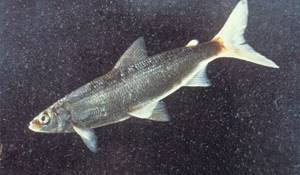
Photo: European vendace
Vendace engages in vertical migrations, a behavior typically associated with predator avoidance. However, it is more at risk than the related European whitefish, which often lives in sympathies with vendace. Vendaces have much smaller eggs, higher fecundity, and lower survival times than whitefish.
Interesting fact: Vendace usually live 5-6 years. At the age of 8 they are considered seniors. In some large populations, vendaces can be up to 15 years old.
Vendace is commonly found in open water habitats in lacustrine and estuarine environments, reflecting the foraging ecology of zooplankton. It can be expected to be found deeper during the day than at night due to vertical migrations. Since it is a cold water species, it usually avoids the upper layers of water when the temperature exceeds 18-20°C.
Interesting fact: During the first month or two after hatching in the spring, larvae and juveniles can be found in coastal areas. After this, vendace takes on pelagic habitat use. During the daytime it goes down to a greater depth than the depth used at night. It also forms schools during the daytime.
Vendace is a freshwater fish. Although it can tolerate brackish waters with relatively low salinity, natural distribution between different streams is usually limited by the high salinity of the estuary waters. Downstream dispersal within a stream can be expected, even if the stream is regulated by dams. Upstream acceleration is limited by strong rapids and waterfalls.
Diffusion through deliberate introductions occurred through supply plans, such as stocking Lake Inari and its tributaries. Sport fishermen also sometimes use vendace as bait, and if live bait is transported, this may pose a risk of entry into non-native aquatic systems. The risk of successful creation is related to the host ecosystem.
The Siberian vendace - Yakutskaya, which lives in cold freshwater rivers flowing into the Laptev Sea, is considered the most healthy and extremely tasty. This is one of the smallest representatives of the whitefish family, which in weight very rarely exceeds 1 kilogram, and in length reaches only 25 cm - 35 cm. But its small size in no way means it is useless.
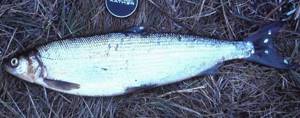
Vendace, along with large gourmet fish, contains more than 17.8 grams of protein in meat, which is approximately 70 Kcal of the total energy value of the product, which is 90 Kcal. The remaining 20Kcal comes from 2 grams of fish oil. For such a carcass size, these fat content values are considered quite high, however, Vendace is not a fatty fish and can be bought fresh frozen without loss of valuable qualities.


